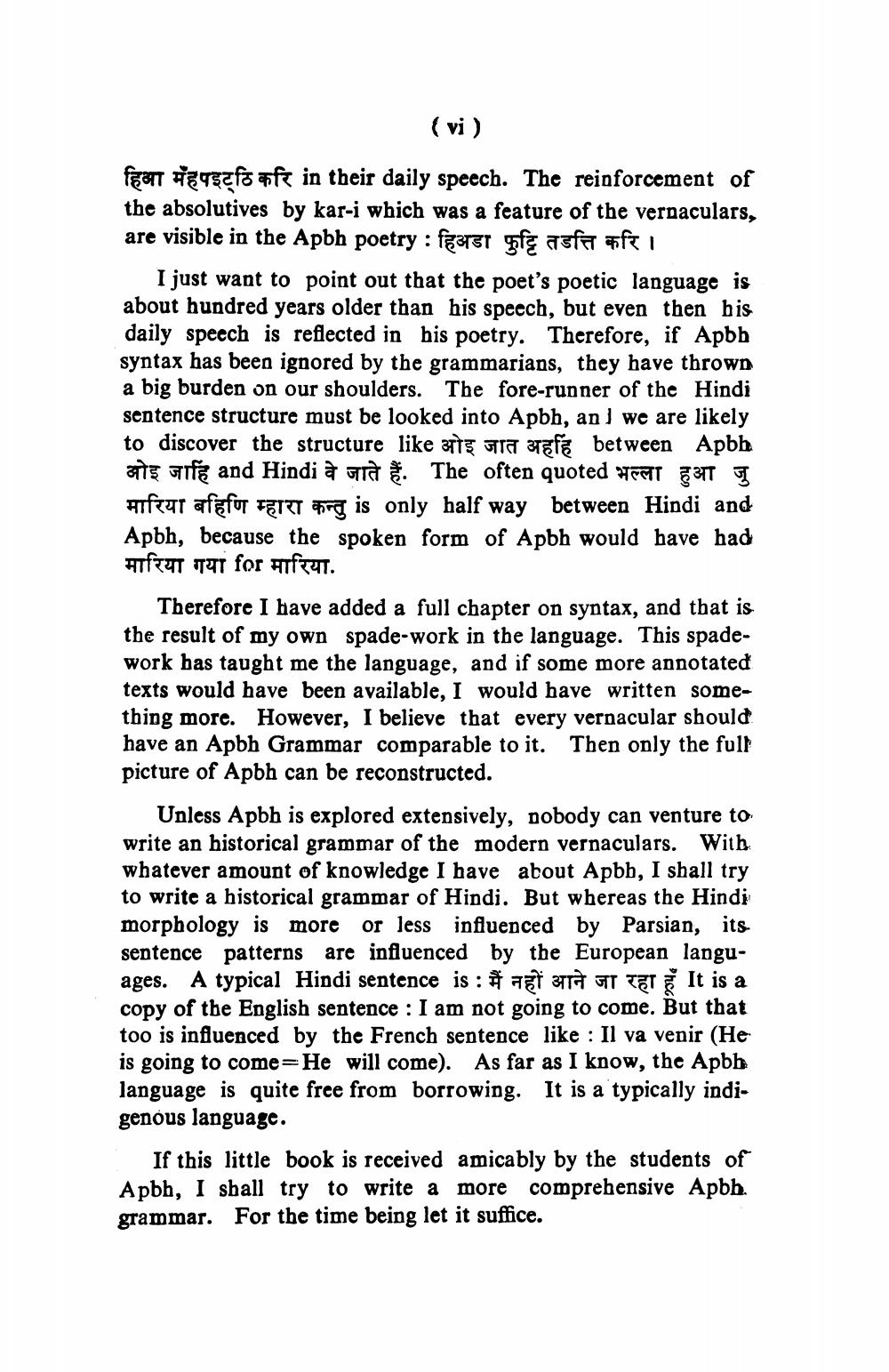________________
(vi)
fgangseff in their daily speech. The reinforcement of the absolutives by kar-i which was a feature of the vernaculars, are visible in the Apbh poetry : हिअडा फुट्टि तडति करि ।
I just want to point out that the poet's poetic language is about hundred years older than his speech, but even then his daily speech is reflected in his poetry. Therefore, if Apbh syntax has been ignored by the grammarians, they have thrown a big burden on our shoulders. The fore-runner of the Hindi sentence structure must be looked into Apbh, an 1 we are likely to discover the structure like a ra af between Apbh ओइ जाहिं and Hindi वे जाते हैं. The often quoted भल्ला हुआ जु feur afgfor 12 g is only half way between Hindi and Apbh, because the spoken form of Apbh would have had मारिया गया for मारिया.
Therefore I have added a full chapter on syntax, and that is the result of my own spade-work in the language. This spadework has taught me the language, and if some more annotated texts would have been available, I would have written something more. However, I believe that every vernacular should have an Apbh Grammar comparable to it. Then only the full picture of Apbh can be reconstructed.
Unless Apbh is explored extensively, nobody can venture to write an historical grammar of the modern vernaculars. With whatever amount of knowledge I have about Apbh, I shall try to write a historical grammar of Hindi. But whereas the Hindi morphology is more or less influenced by Parsian, its sentence patterns are influenced by the European languages. A typical Hindi sentence is : It is a copy of the English sentence: I am not going to come. But that too is influenced by the French sentence like: Il va venir (He is going to come=He will come). As far as I know, the Apbh language is quite free from borrowing. It is a typically indigenous language.
à
If this little book is received amicably by the students of Apbh, I shall try to write a more comprehensive Apbh. grammar. For the time being let it suffice.




